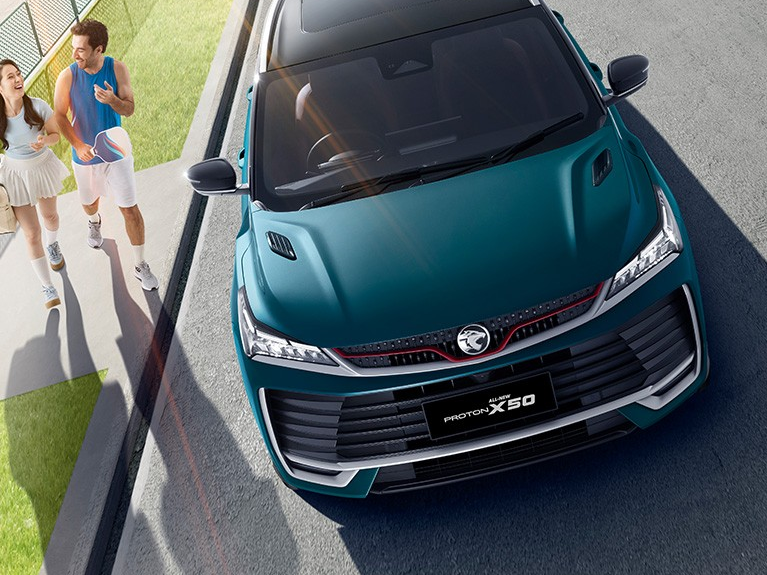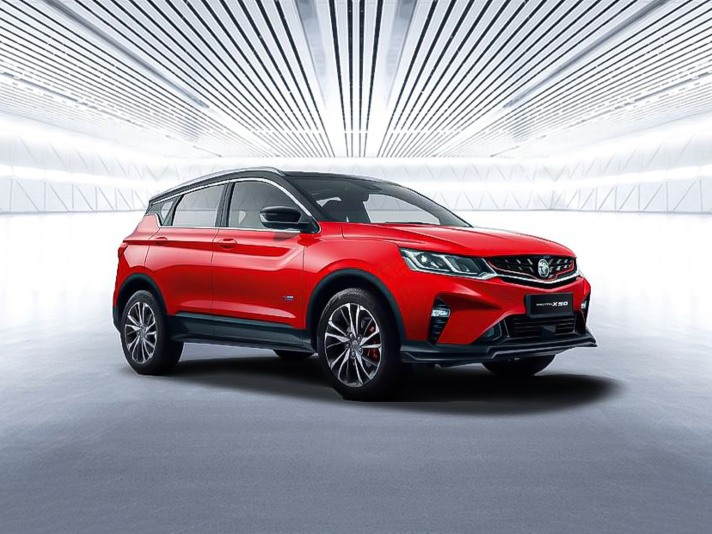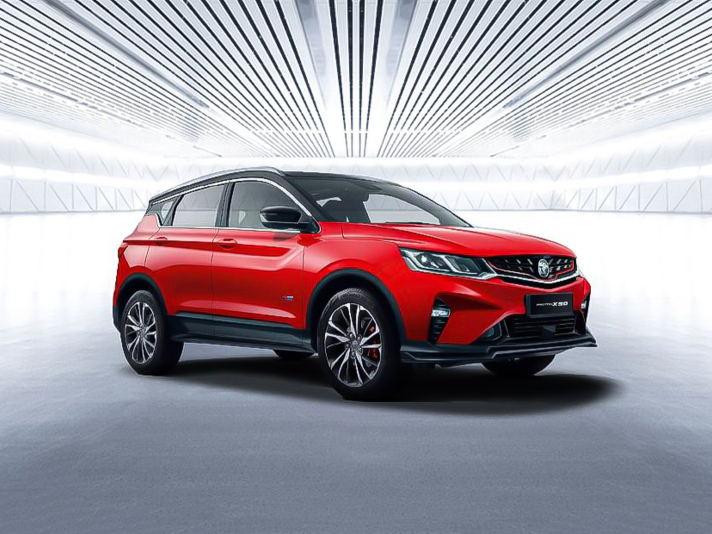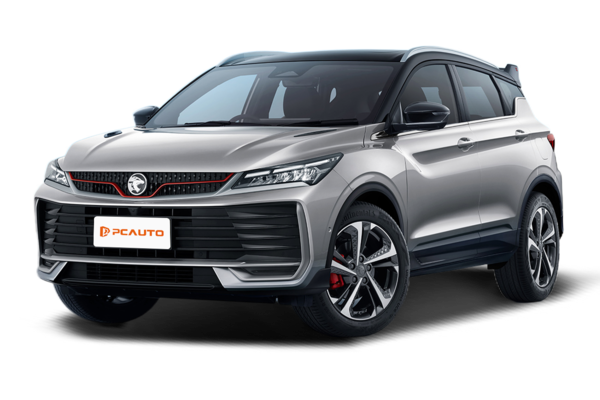Q
how to start proton x50 with key
Starting the Proton X50 is a breeze with the key fob. First off, make sure your key fob battery has enough juice. Then hop in, press down the brake pedal, and hit the start button, engine fires right up. If your key fob is running low on power, just hold it close to the special sensing area (usually marked with a key icon) next to the start button and try again. Since the X50 comes with a smart key system, it also does keyless entry. As long as the fob is within about a meter of the car, you can just grab the door handle and it unlocks, no need to fumble around pulling the key out of your pocket or bag. Super handy, right? A piece of advice: If you're not gonna drive the car for a while, check the key fob battery regularly. You don't want to get stuck with a dead battery when you need to start it. Also, try not to place the key fob in the same spot as your phone or other electronics—signal interference can mess with it sometimes. For Malaysian drivers, this system holds up pretty well in the hot, humid weather. But still, keep the key fob dry—water damage to the circuits is definitely something to avoid.
Special Disclaimer: This content is published by users and does not represent the views or position of PCauto.
Related Q&A
Q
Does the Proton X50 have Android Auto?
Yes, the Proton X50 does support the Android Auto feature. Users can pair their Android phones with the vehicle's infotainment system via a USB cable, enabling them to use applications like navigation, music, and calls on the car's head - unit, which enhances driving convenience. Besides Android Auto, the Proton X50 is also compatible with Apple CarPlay to meet the needs of iPhone users. Its 7 - inch central control touchscreen offers smooth operation and an intuitive interface design, giving it a strong sense of technology.
It's worth mentioning that the addition of Android Auto and Apple CarPlay makes the X50 more competitive in terms of smart connectivity, especially appealing to the young consumer group in Malaysia. Moreover, the Proton X50 is also equipped with other practical features such as voice control, a rear - view camera, and multiple driving mode options, further enhancing the comfort and safety of daily driving.
If you have any questions about the specific operation or compatibility of the car's infotainment system, it is recommended that you visit an authorized Proton dealer to experience the vehicle's functions in person or refer to the official manual for more detailed usage instructions.
Q
Does the Proton X50 have a sunroof?
Yes, the Proton X50 is indeed equipped with a Panoramic Sunroof, which is a highlight feature of this model. It's especially available in higher - spec versions like the Premium and Flagship. This panoramic sunroof can offer passengers a broader view and better lighting inside the car.
The panoramic sunroof not only enhances the luxury feel of the interior but also adds to the driving pleasure during the night or on sunny days. However, it's important to note that proper maintenance of the sunroof is crucial. Regularly cleaning the tracks and seals can prevent water leakage and abnormal noises.
Given Malaysia's hot climate, it's advisable to use the sunshade when parking the car for an extended period to reduce the temperature rise inside. Meanwhile, the sunroof's UV - protection design can also safeguard passengers from direct sunlight.
As a popular SUV in the local market, the Proton X50 is well - received by consumers for its features and cost - effectiveness. The addition of the sunroof further boosts its appeal. If you're interested in this vehicle, you can visit a nearby Proton showroom to experience its performance firsthand.
Q
Does the Proton X50 have paddle shifters?
Yes, the Proton X50 comes with paddle shifters on certain models, especially the higher - spec versions like the 1.5 TGDi Flagship. This model is equipped with a 7 - speed Dual Clutch Transmission (DCT) and offers the paddle shifter feature, allowing drivers to manually control gear shifts, enhancing driving pleasure and handling flexibility.
The paddle shifters are usually located behind the steering wheel. Drivers can shift gears quickly without taking their hands off the steering wheel, which is especially useful when taking corners or overtaking. It's important to note that the functionality of the paddle shifters may vary depending on the vehicle's configuration. It's recommended to check the specific configuration list of the model before purchasing.
Moreover, while paddle shifters are a great addition to enhance the driving experience, for daily commuting, the automatic mode is usually sufficient. The manual mode is more suitable for those who seek a more engaging driving experience.
As an SUV targeting the young market, the Proton X50 has made many improvements in terms of technology and driving experience. The paddle shifters are just one of them. Other features such as the Advanced Driver Assistance System (ADAS) and intelligent connectivity functions are also worth paying attention to.
Q
Does the Proton X50 have wireless charging?
Yes, some high - end models of the Proton X50 are indeed equipped with a wireless charging function. This feature mainly appears in the Flagship and Flagship X versions, which allows car owners to wirelessly charge their Qi - standard - compatible phones. However, it's important to note that this function may not be applicable to all phone models, especially some older devices or those that don't meet the Qi standard.
As an SUV targeting the young market, the Proton X50 comes with quite a rich set of technological features. Besides wireless charging, it also has an advanced driver - assistance system, a full - LCD instrument panel, and an intelligent infotainment system. These features give it a good competitive edge among vehicles in the same class.
For Malaysian consumers, the addition of the wireless charging function does enhance the convenience of daily driving, especially during urban commutes as it reduces the hassle of dealing with cables. But if you're considering buying the X50, it's advisable to first check if your phone supports wireless charging or visit a showroom to personally experience whether this function meets your needs.
In addition, although wireless charging is convenient, its charging efficiency is usually a bit slower than that of wired charging. So, if you need a quick charge urgently, you may still have to use the traditional USB port.
Q
How much luggage can fit in the Proton X50?
The Proton X50 offers a 330-liter luggage compartment, which is ample for daily use. You can easily fit several small to medium-sized suitcases or shopping bags in it. This makes it highly practical for regular family outings or short trips. If you need more space, the rear seats can be folded down in a 60:40 split. Once folded, the cargo capacity gets a significant boost, making it suitable for transporting longer or larger items like golf bags or small pieces of furniture.
In Malaysia, the Proton X50's compact SUV positioning gives it an edge in city driving and parking, making it more maneuverable. At the same time, it doesn't compromise on practicality. The luggage compartment has a wide opening, making it easy to load and unload items.
It's worth noting that the actual loading capacity can be affected by the shape of the luggage and how it's arranged. We recommend that car owners plan their space usage wisely. If you often need to carry a large amount of stuff, you might want to consider adding a roof box or a luggage rack to increase the cargo capacity.
Overall, the Proton X50 strikes a good balance between daily convenience and occasional heavy-loading needs in its space design, making it a great fit for Malaysia's diverse driving scenarios.
Q
What is the max power of Proton X50?
The maximum power of the Proton X50 depends on the engine version you choose. Among them, the 1.5-liter turbocharged gasoline direct injection (TGDI) engine version can deliver a maximum power of 177 horsepower and a maximum torque of 255 Nm. While the 1.5-liter turbocharged multi-point injection (MPI) engine version offers a maximum power of 150 horsepower and a maximum torque of 226 Nm. Both of these two engine versions are paired with a 7-speed dual-clutch transmission (DCT), providing excellent power performance and fuel economy.
As a popular B-segment SUV among Malaysian consumers, the Proton X50 not only has strong power but also comes with a wealth of technological features, such as the advanced driver assistance system (ADAS) and smart connectivity functions, which meet the modern drivers' needs for safety and convenience. It's worth mentioning that the engine technology of the X50 comes from the cooperation between Geely and Volvo, ensuring its reliability and advancedness. At the same time, Proton has also made targeted adjustments for the local market, making it more suitable for the road conditions and driving habits in Malaysia.
For consumers who value power and technology, the X50 is undoubtedly a choice worthy of consideration. Especially among models in the same class, its cost - performance ratio is particularly outstanding.
Q
How heavy is Proton X50?
The weight of the Proton X50 varies according to different vehicle configurations. The curb weight is approximately between 1,300 and 1,350 kilograms, specifically depending on the selected powertrain version and additional features. For example, models with a 1.5L turbocharged engine are slightly heavier than the entry - level version. The weight design of this vehicle takes into account the rigidity and safety of the body structure while also considering fuel economy. It falls within a reasonable range among compact SUVs.
For Malaysian consumers, the X50 has a moderate weight. It can provide a stable driving experience without significantly increasing fuel consumption, making it highly suitable for urban commuting and family use. Additionally, the vehicle's weight affects its handling and cornering stability. The Proton X50 has achieved a good balance in this regard through chassis tuning and the application of lightweight materials, resulting in a more agile driving feel.
If you're particularly concerned about the vehicle's weight, it's recommended to pay attention to its performance on different road conditions during a test drive to better evaluate whether it meets your personal needs.
Q
Do Proton X50 and Proton X70 have the same engine?
Although both the Proton X50 and Proton X70 are SUV models under Proton, their engine configurations aren't exactly the same. The Proton X50 is equipped with a 1.5 - liter turbocharged three - cylinder engine, which comes in a regular version and a performance version (TGDI). The maximum power of these two versions is 150 horsepower and 177 horsepower respectively, and it's paired with a 7 - speed dual - clutch transmission.
On the other hand, the Proton X70 offers two engine options: a 1.8 - liter turbocharged four - cylinder engine and a 2.0 - liter naturally aspirated four - cylinder engine. The 1.8T version has a maximum power of 184 horsepower and is also equipped with a 7 - speed dual - clutch transmission.
The differences in the engine design of these two cars are mainly reflected in displacement, number of cylinders, and power tuning. The X50 focuses more on fuel economy and compactness, while the X70 leans towards power output and driving experience.
For Malaysian consumers, when making a choice, they can consider their own needs. If you're after something small, agile, and ideal for city commuting, the X50 is a great option. If you need more space and stronger power, the X70 is more suitable.
Moreover, both of these cars adopt the technology from the cooperation between Proton and Geely, ensuring reliability and after - sales service. It's recommended that you take a test drive at a dealership before purchasing to experience their actual performance.
Q
Is the Proton X50 2WD or 4wd?
The Proton X50 offers two drivetrain versions in the Malaysian market: front-wheel drive (2WD) and four-wheel drive (4WD), depending on the selected vehicle configuration. The entry-level 1.5T Standard and 1.5T Executive versions are equipped with a front-wheel drive system, while the higher-configured 1.5T Premium and 1.5T Flagship versions come with a four-wheel drive system. This design allows consumers to choose the appropriate drivetrain according to their budget and needs.
The four-wheel drive version provides better grip and stability on slippery roads or in complex terrains, making it suitable for areas with frequent rainfall or poor road conditions. On the other hand, the front-wheel drive version excels in fuel economy and daily city driving.
As a compact SUV, the Proton X50 is well - loved by Malaysian consumers for its stylish appearance, rich configurations, and diverse drivetrain options. It can handle both urban commuting and occasional outdoor adventures.
For consumers considering purchasing the X50, understanding the characteristics of different drivetrains can help them make a more suitable choice based on their personal usage scenarios. It is also recommended to experience the differences between the two drivetrain versions during a test drive to ensure choosing the most suitable model.
Q
What segment does Proton X50 belong to?
The Proton X50 belongs to the B-Segment vehicles. The B-Segment usually refers to the sub - market of compact SUVs. Generally, vehicles in this segment are relatively compact in size, which makes them well - suited for daily urban commuting and parking. The Proton X50 has a length of 4330mm, a width of 1800mm, a height of 1609mm, and a wheelbase of 2600mm. Its overall size falls within the scope of B - Segment vehicles. Vehicles in this class are favored by many consumers due to their good flexibility, relatively affordable prices, and low operating costs. The Proton X50 also participates in the competition in this sub - market with its own features and configurations, offering consumers diverse choices.
Latest Q&A
Q
How expensive is it to maintain a Volvo XC90?
In Malaysia, the maintenance costs for the Volvo XC90 sit in the upper-middle range for luxury SUVs. Regular services like oil changes and filter replacements typically run between RM800 to RM1,200 per visit, depending on the type of oil used and the specific pricing at each authorized service center. Major services, which might include brake pad replacements and transmission fluid changes, can set you back anywhere from RM3,000 to RM5,000. It’s definitely advisable for owners to stick to the official maintenance schedule to keep the vehicle performing at its best and to avoid even heftier repair bills down the line.
As a luxury SUV that prioritizes safety and technology, the XC90 does come with relatively higher maintenance costs. However, Volvo’s reputation for durability and high-quality components means lower long-term failure rates, which helps offset those unexpected repair expenses. Malaysia’s authorized Volvo service centers offer transparent maintenance packages, so owners can get a clear idea of costs upfront and plan their budgets accordingly. It’s also worth considering an extended factory warranty plan to cover potential high-cost repairs later in the vehicle’s life.
When stacked against other luxury brands, Volvo’s maintenance fees are reasonably competitive. And let’s not forget—its top-tier safety tech and eco-friendly interior materials are big reasons many owners are happy to invest that little bit extra.
Q
What is the life expectancy of a XC90?
The Volvo XC90, as a luxury SUV, typically enjoys a service life of 15 to 20 years in the Malaysian market, though this can vary depending on maintenance upkeep, driving habits, and local climate conditions. Sticking to regular oil changes, transmission fluid replacements, timing belt services, and strictly following the manufacturer's recommended maintenance schedule can significantly extend its lifespan. Malaysia's hot and humid environment can accelerate the aging of rubber components and electronic parts, so it's advisable to regularly inspect chassis bushings, weatherstripping, and wiring harnesses. The Drive-E engine under the hood has a solid reputation for reliability, but using the correct grade of fully synthetic oil is a must to ensure it performs at its best. For those looking at a used XC90, pay close attention to the air suspension (if equipped) and the turbocharging system – these are common high-maintenance areas on premium models. It's worth noting that Volvo's safety tech, like the City Safety system, tends to hold up well even in high-mileage vehicles, which is a core strength of the brand. With proper care, the XC90 is more than capable of serving Malaysian families for the long haul. Its durability is on par with German rivals in the same class, but it often comes with a more attractive maintenance cost advantage.
Q
Which Volvo XC90 to avoid?
Honestly, every version of the Volvo XC90 brings its own unique strengths and character—there’s really no model you should outright avoid. But if you’ve got specific needs or priorities, there are a few things worth keeping in mind. Let’s break it down. If you’re working with a tight budget but still want solid features, the 2020-2022 models might be tricky since some of those are no longer in production. That could mean higher costs or more hassle down the line when it comes to maintenance and finding replacement parts.
Now, if value for money is your main goal, the 2025 Volvo XC90 Ultra T8, priced at RM 434,888, sits on the higher end. If you don’t really need much all-electric range, you won’t get to fully leverage its plug-in hybrid benefits, making it a bit of a stretch cost-wise. And let’s say you’re not overly fussed about the latest power upgrades or tech tweaks—then the incremental improvements in newer models might not feel worth the extra cash. In that case, going for an older model could save you a pretty penny upfront.
Q
Is the XC90 a large SUV?
Yeah, the Volvo XC90 is definitely a full-size SUV. It stretches close to 5 meters in length and has a wheelbase over 2.9 meters, offering a three-row, seven-seat layout. The space is roomy and comfortable, making it a solid choice for Malaysian families or anyone needing to haul multiple passengers. Over here in Malaysia, the XC90 has built up a good following thanks to its Scandinavian luxury design, cutting-edge safety tech, and strong performance. The T8 plug-in hybrid, in particular, strikes a nice balance between power and eco-friendliness, which aligns perfectly with what local folks expect from a premium SUV. Now, full-size SUVs generally give you better ground clearance and cargo capacity, but that larger footprint can feel a bit cumbersome when navigating the tighter streets of cities like Kuala Lumpur. So, it's smart to really think about your daily driving needs before taking the plunge. Rivals in this segment include German heavyweights like the BMW X7 and Mercedes-Benz GLS – definitely worth checking out how they stack up in terms of space, features, and overall driving feel before making a decision. Given Malaysia's hot and rainy climate, the XC90's panoramic sunroof and four-zone climate control are nice touches that boost comfort. And of course, Volvo's City Safety system adds an extra layer of security when dealing with tricky traffic situations.
Q
What is the best year of XC90 to buy?
When shopping for a Volvo XC90 in Malaysia, the second-generation models from 2016 onwards are your best bet – especially the post-2018 facelift versions. These come with the more refined Drive-E turbo engines (T5/T6/T8), an upgraded Sensus infotainment system, and revised suspension tuning that better suits local road conditions. If your budget stretches further, the 2020+ models step up with standard Pilot Assist semi-autonomous driving and the CleanZone air purification system, both of which are surprisingly handy in our tropical climate.
A quick heads-up: early 2016-2017 builds had occasional electronic system lag issues, so we’d strongly recommend going through the Volvo Selekt certified pre-owned program to get that factory warranty peace of mind. What really sets the XC90 apart in its class is the standard 7-seat layout and that typically Volvo超高安全配置 – including the rollover protection system. That said, it’s worth cross-shopping against the Lexus RX or BMW X5 from the same model years. European cars do tend to have slightly higher maintenance costs here compared to Japanese rivals, though Volvo’s factory 5-year free servicing plan helps take the edge off that difference.
View MoreRelated News

The all-new Proton X50 has sold over 6,000 units in a month and a half since its launch, becoming the champion in its segment.
RobertSep 18, 2025

2025 Proton X50 launched for 5 days and has received 8,000 orders, with 999 units delivered
RobertAug 1, 2025

2025 Proton X50 Facelift Debuts with New 1.5L Four-Cylinder, Priced from RM89,800
AshleyJul 28, 2025

Proton X50 Interior Revealed: A Practical Space Designed for Young Drivers
LienJul 3, 2025

2025 Proton X50 Facelift: Major Upgrades & Possible 4-Cylinder Engine!
RobertJun 13, 2025
View More















Pros
Cons